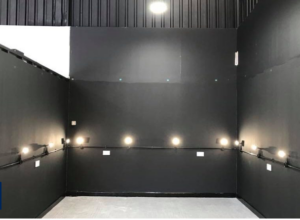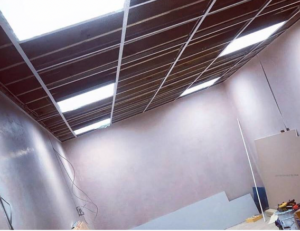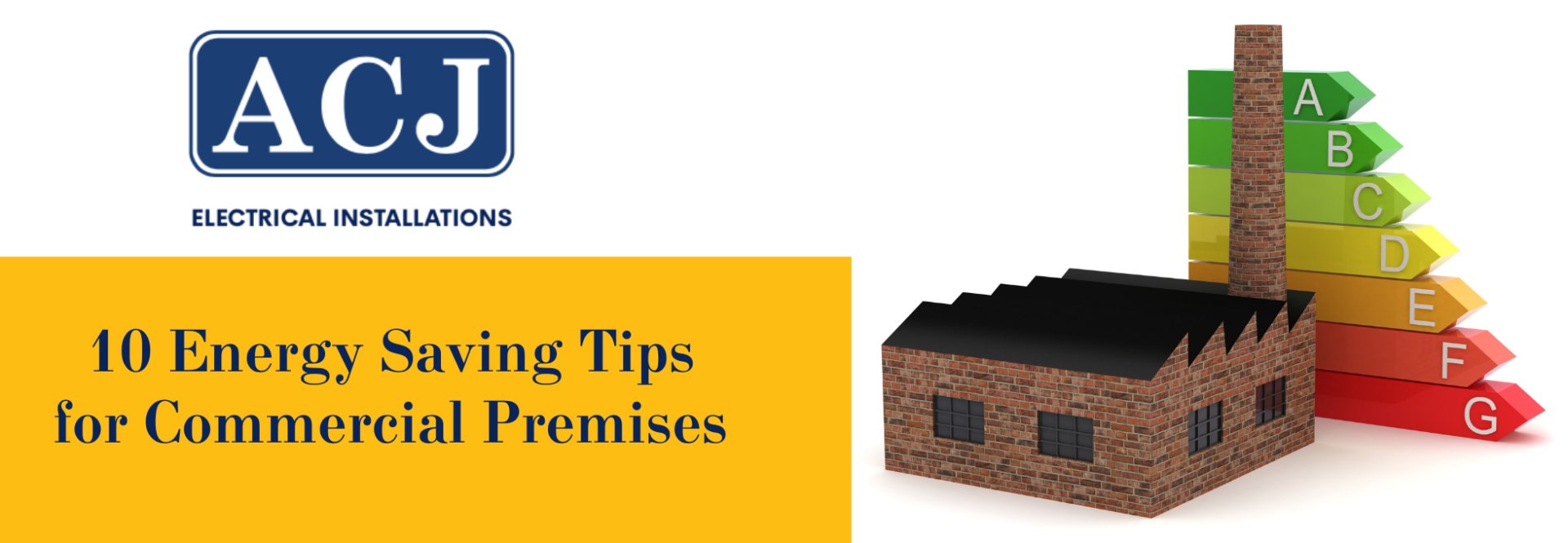10 Energy Saving Tips for Commercial Premises
Wednesday 1st March 2023
With the recent price hikes in energy, it is clear we all need to take action to reduce energy consumption, including commercial premises.
At ACJ Electrical Installations Ltd we do a lot of work on commercial sites so thought we would talk about the sorts of things businesses can do to reduce energy consumption and, therefore, reduce electricity bills.
- Replace inefficient lighting:
Don’t underestimate the savings that come with replacing inefficient lighting with LED lighting. Energy-efficient bulbs not only last longer than traditional bulbs but they can reduce energy consumption by anywhere from 25 to 80 percent while often improving productivity. Combining more efficient bulbs with daylight controllers helps cut down on waste – without having negative impacts on a building’s occupants.
- Turn off lights when not in use.
It might seem like a no-brainer, but in a typical office, lights stay on in areas like break rooms, bathrooms, or conference rooms, even when those spaces aren’t being used. Sensor lights can help to keep the lights on when needed, but off when they’re not.
- Effective heating
Heating is usually the most significant energy cost in a workplace, accounting for up to 40% of energy use in a non-domestic building. Ensure you regularly service heaters and boilers.
You don’t need to heat or cool a workplace after everyone has gone home for the night. Even if your team’s hours vary, using programmable or smart thermostats to manage the temperature during “off” hours can make a big difference.
Preventing heat loss through topping up insulation and blocking draughts can significantly reduce heating costs which leads us on to general infrastructure upgrades.
- Infrastructure upgrades:
Significant infrastructure upgrades – including increasing roof insulation, replacing old windows, and upgrading fan systems – can result in real cost savings, a reduction in energy use, and increased comfort of building occupants.
Why not consider installing solar panels? Generating independent electricity enables a business to rely less on the grid. Moreover, a business is more active in the day, so it can efficiently utilise the power created by sunlight.
- Reduce office plug load:
Many low and no-cost practices exist for reducing energy costs associated with plug loads. Many devices plugged into a building’s electrical system – things like computers, printers, heaters, and vending machines – have settings to help save energy.
A single computer and monitor left on 24 hours a day can cost over £50 a year. Switching it off out of hours and enabling standby features can reduce this to £15 a year. You could also fit seven-day timers to ensure equipment like printers, copiers and water chillers are turned off overnight and at weekends.
- Involve your staff:
The most effective energy saving programmes involve everybody within a business. Savings of five to ten per cent are common – often through employees suggesting and implementing the measures listed in this blog.
Things staff can do in addition to those listed here are:
- Consider how they use kitchen equipment such as kettles, fridges and dishwashers e.g., keeping a fridge clean and not over filled or ensuring a dish washer is fully loaded before switching it on.
- Keep exterior and goods doors closed as much as possible.
- Stop using portable heaters.
- Avoid opening windows when air-conditioning is running.
Creating a culture of energy awareness within your organisation is a great way to get employees involved. Consider designating an “energy ambassador” or “energy reduction lead” to drive energy awareness efforts and help educate other employees on the importance of energy awareness.
- Check new equipment:
Check energy requirements before you buy any new equipment – then take the running charges into account when looking at the total cost of ownership. Think about how much heat new equipment could produce too and whether it could increase your air conditioning bills.
You could also install evaporative condensers, instead of air-cooled condensers, to get rid of heat. Evaporative condensers use a wetted filter that increases the ability to remove heat.
- Energy Benchmarking:
Make a point to regularly review your building’s energy consumption to identify new and different areas for savings. Regularly review programmable thermostats, boilers, and chiller controls to make sure each is running at peak efficiency based on the time of year.
- Equipment Maintenance:
Make sure that all your office equipment is properly maintained and operates at peak efficiency. One common factor across all the measures above is the need to maintain your equipment to make sure it’s operating efficiently.
Give vents, fans and air conditioning filters a quick clean so they don’t have to work as hard. Move filing cabinets, workbenches and other pieces of work furniture that are blocking your radiators. They absorb some of the heat and cost your business that little bit more. Clean light fittings and windows to improve lighting.
- Monitor energy consumption:
Make sure you read your meters regularly. This will enable you to identify how your company is using energy and where it’s being wasted – see how to monitor your energy use.
From LED lighting to branch circuit monitoring, ACJ Electrical Installations Ltd can help your business with energy saving. We can assist on a range of solutions, so your company can reduce its carbon footprint and cut down on bills. Get in touch with us today for more information.

Sources:
https://www.edfenergy.com/energywise/cut-business-energy-bills




